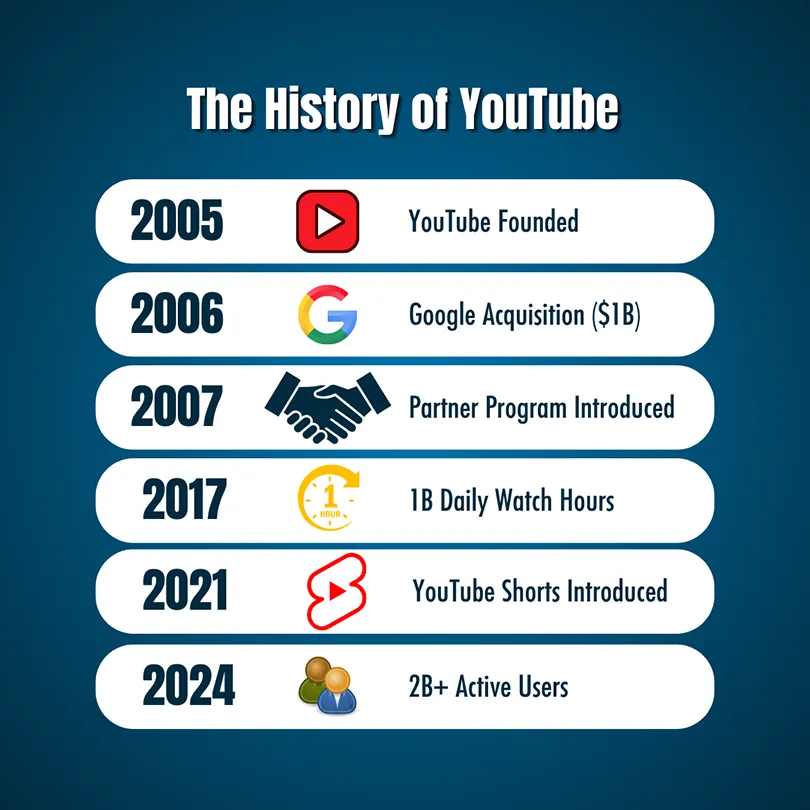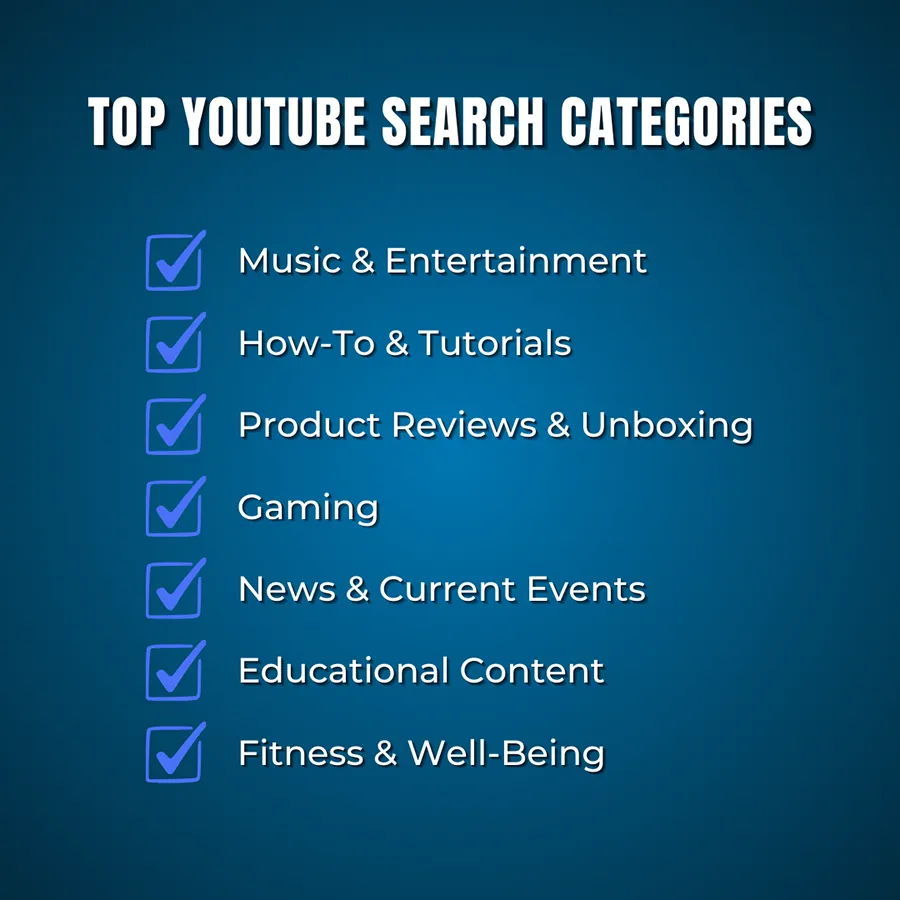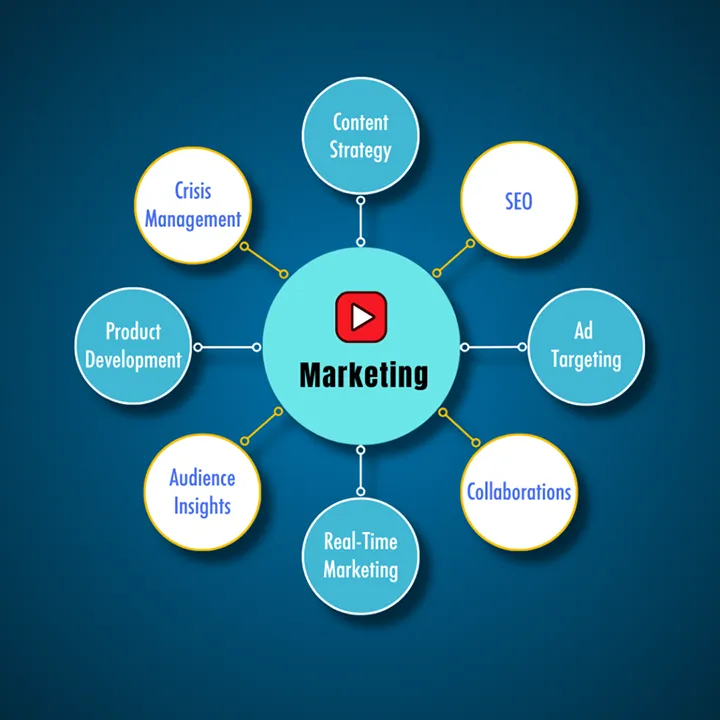YouTube, the world’s leading video platform, isn’t just a hub for entertainment—it’s a powerhouse for digital marketing success. As the second-largest search engine globally, YouTube offers a vast audience eager to engage with diverse content.
Global Reach: With over 2 billion logged-in monthly users, YouTube transcends geographical boundaries, providing an unparalleled opportunity to connect with a diverse, global audience.
Visual Engagement: Video content has become the preferred mode of consumption, and YouTube stands at the forefront. Engage your audience with visually compelling narratives, tutorials, and product showcases.
SEO Dominance: Leverage YouTube’s search engine prominence. Optimized videos can appear in Google search results, enhancing your overall online visibility and discoverability.
Versatile Content Formats: Whether it’s long-form content, short clips, or live streams, YouTube accommodates various content formats, allowing you to tailor your message to your audience’s preferences.
Audience Interaction: Foster a community around your brand through likes, comments, and subscriptions. YouTube’s interactive features enable direct engagement, transforming passive viewers into active participants.
Monetization Opportunities: Beyond marketing, YouTube offers avenues for monetization. Explore partnerships, sponsorships, and the YouTube Partner Program to turn your channel into a revenue stream.
In this digital era, YouTube isn’t just a platform; it’s a strategic asset for brands. Dive into the multifaceted realm of YouTube marketing, where the value extends far beyond views—it’s about forging lasting connections and driving tangible results.
Top YouTube Searches
Top YouTube searches can offer significant insights into what content users are actively looking for. The specific top searches can change over time and are influenced by current events, cultural moments, popular influencers, new music releases, and much more.
By understanding general categories and the value of such insights, digital marketers can tap into the potential of YouTube effectively. It is also important to understand who is popular on YouTube, as content creators can amass huge fanbases and loyal subscribers.
To fully understand how popular and potent advertising on YouTube is, let’s take a step back. Here’s a history of YouTube, as well as the amazing amount of users that it has attracted over the years.
The History of YouTube

YouTube started off in 2005 and was created by former PayPal employees. After only a year of operation, in 2006, Google acquired it for just over $1 billion in stocks. By 2007, YouTube had already introduced a partnership program, allowing content creators to monetize their work.
Through the 2010s, the popularity of YouTube continued to grow. By 2017 the company announced that users were watching one billion hours of content every day. In 2020, it was revealed that 1 in 4 American adults use YouTube for getting their news
Popularity has continued to increase, as well as responses to modern trends, such as the creation of YouTube Shorts and Stories, which have kept the platform at the forefront of relevance.
As of 2024, YouTube has over 2 billion active users, with tens of millions of daily users. While that number may seem large, this is only counting those who are logged in. Millions more use it every day without logging in, making it one of the largest communities on the internet worldwide.
Top Categories of YouTube Searches

1. Music and Entertainment
This is often the driving force behind top searches, given the prominence of music videos on YouTube. Examples: song titles, artist names, movie trailers. Individuals who rank in the top ten of this category have huge numbers of views. These are people and groups like BTS, Eminem, Taylor Swift, etc.
2. How-to and Tutorials
Many users turn to YouTube for instructional content. Examples: “How to tie a tie,” “Photoshop tutorial,” and “Cooking recipes.”
There are also specific YouTubers who are well-known for producing this type of content. Each category will have content creators producing content specifically for it and generalized How-to pages. Examples include eHow and Howcast.
3. Product Reviews and Unboxing
Consumers might look for product demonstrations or reviews before purchasing. Examples: “iPhone 13 review,” “Gaming laptop unboxing.” Popular YouTube content creators in this field are Ryan’s World and Unbox Therapy.
4. Gaming
Walkthroughs, live streams, and game reviews are popular. Examples: “Fortnite gameplay,” “[Game title] walkthrough.” Many of the most popular content creators started with gaming, and many continue to produce gaming content. Examples of this include Pewdiepie and Markiplier.
5. News and Current Events
Significant events, especially unexpected ones, can drive a lot of search traffic. Examples: “Olympics highlights,” “Election results.” A great example was the word “Ukraine,” which was a popular search throughout 2022 and early 2023.
6. Educational Content
Users turn to YouTube to learn about various topics. Examples: “Space documentaries,” “Math tutorials.” Creators with a large share of this market include the ever-popular TED-ed and SciShow. Crash Course is a great example of a popular channel with a broader scope.
7. Fitness and Well-being
Especially popular around New Year or summer. Examples: “Home workout” and “Meditation guide.” A lot of people want to be in better shape for health and aesthetic reasons. This leads content creators like Yoga with Adriene and POPSUGAR Fitness.
How Top Searches Are Useful for Digital Marketing

1. Content Strategy
Recognizing what people are actively searching for can help brands and creators produce relevant content that meets audience demand. It makes more sense to put limited marketing resources into producing content and advertisements that are being sought out.
2. SEO and Search Trends
Just like with search engines, video titles, descriptions, and tags play a role in YouTube search rankings. Knowing the top searches helps in optimizing content for better visibility. Depending on how it is measured, YouTube is the second largest search engine on the internet.
3. Ad Targeting
Brands can use popular search terms to target ads more effectively, reaching audiences when they’re engaged in trending topics. Being responsive to changes in trends can make targeting more effective and efficient. Don’t waste your time sending out ads no one is going to watch.
4. Collaborations and Sponsorships
Brands can identify popular creators or trending content areas and partner for promotional efforts. While it varies by product, you can find content creators at all levels in any niche who are willing to partner with brands.
5. Real-time Marketing
By keeping an eye on emerging trends, brands can capitalize on real-time marketing opportunities. Creating timely content that resonates with the audience will help improve the impact and reach of an advertisement or targeted content.
6. Audience Insights
Understanding what specific demographics are searching for can give brands better insights into their audience’s interests, habits, and preferences. Marketers rely on accurate data to build better models of their audience. This helps them understand the who and why of their customer base.
7. Product Development
Brands can gauge product interest or demand based on searches. For example, if many users are searching for reviews of a particular type of product, it might indicate market demand. The more responsive to trends a business is, the more likely they are to remain relevant and drive sales.
8. Crisis Management
For brands keen on reputation management, monitoring YouTube searches can be a way to understand public sentiment or concerns and address them proactively. Staying one step ahead of problems and being prepared can mean the difference between weathering a storm and sinking.
YouTube Marketing and Your Business
For the most current and detailed insights on top YouTube searches, marketers can utilize tools like Google Trends. There are specialized platforms like TubeBuddy or vidIQ that are available as well. Regularly monitoring these insights and adapting strategies accordingly can help marketers stay ahead of the curve and engage with audiences more effectively.
